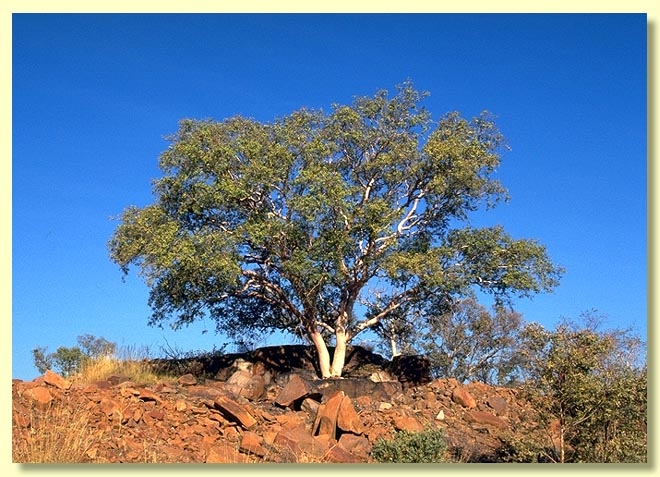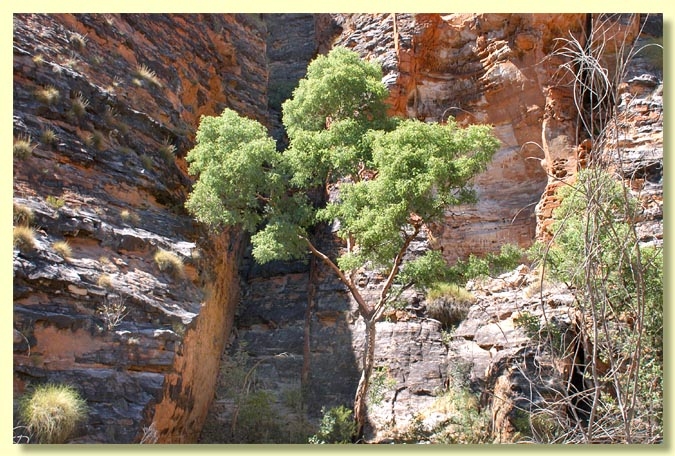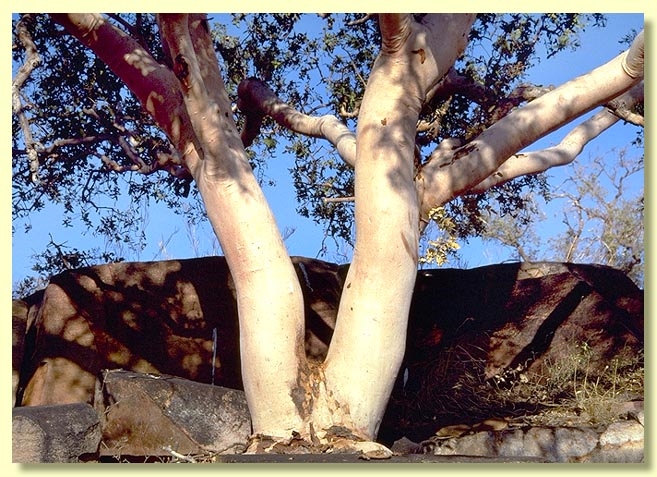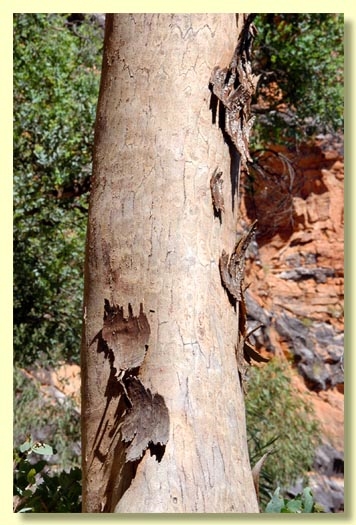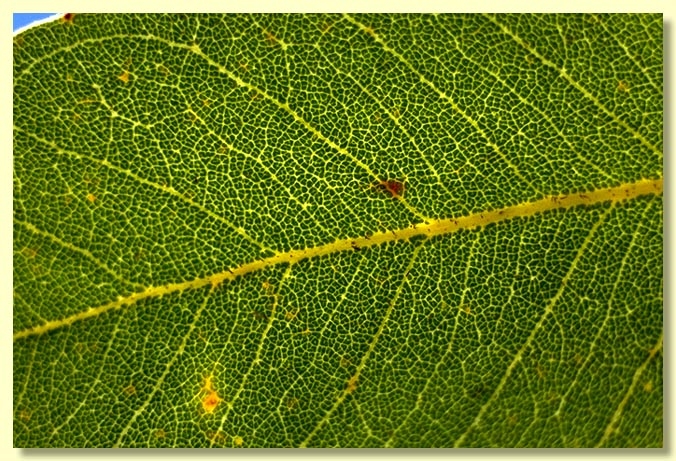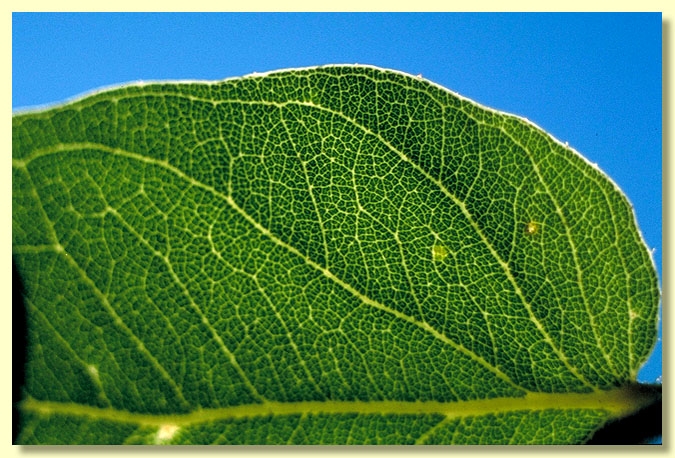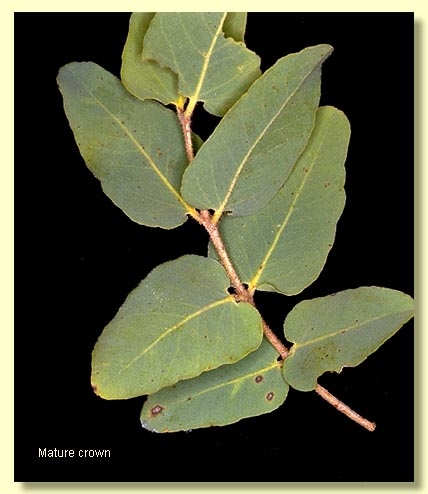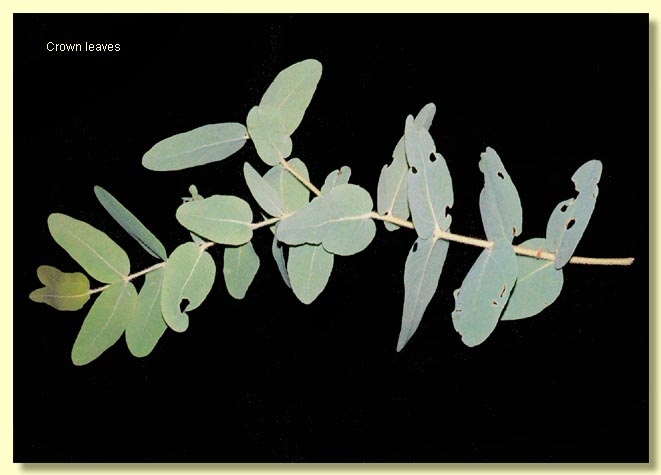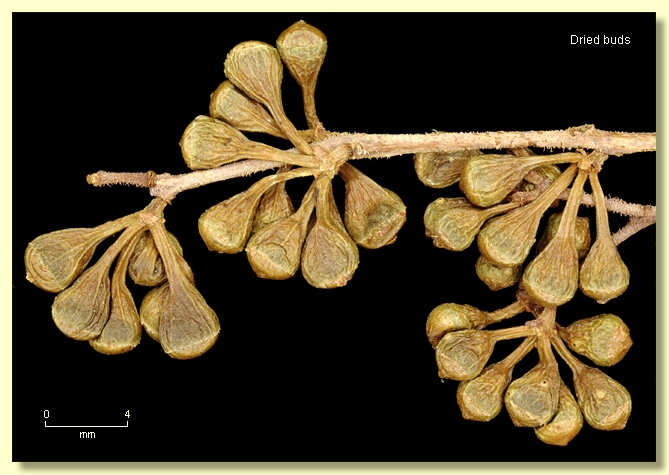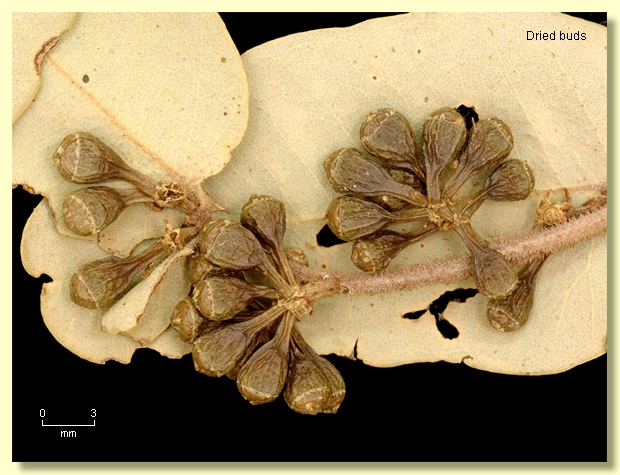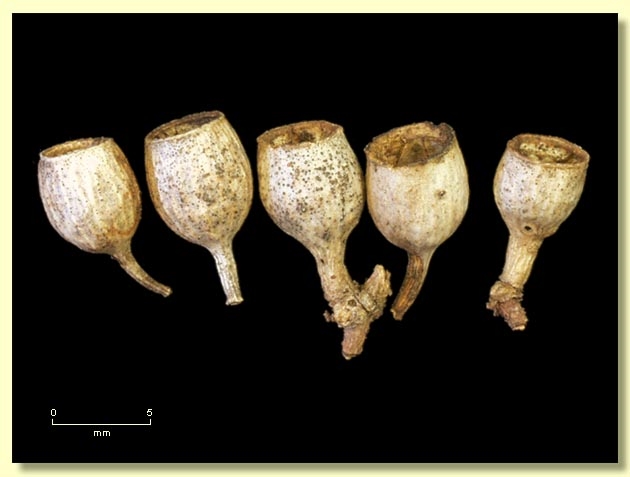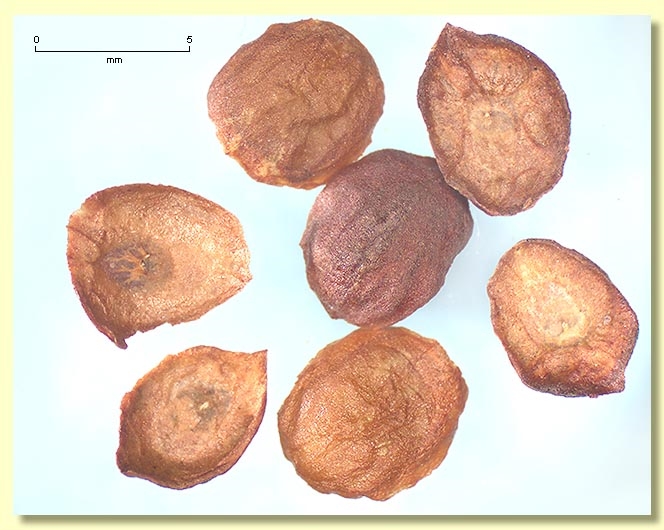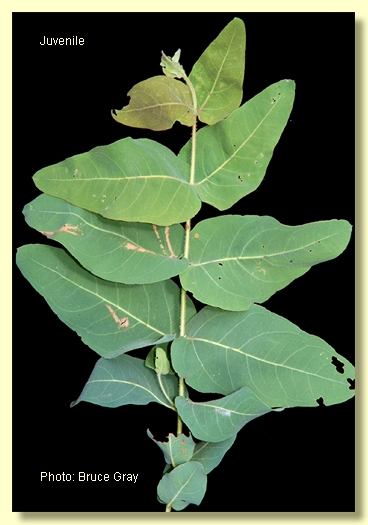Euclid - Online edition
Corymbia aspera
Corymbia | Blakearia
Tree to 15 m tall, though often shorter. Forming a lignotuber.
Bark either smooth throughout, white or cream to very pale grey or pink-brown, or with a basal stocking of grey-brown tessellated rough bark.
Branchlets lack oil glands in the pith; setose to scabrid with bristle-glands. In this species the bristle-glands lack simple hairs.
Juvenile growth (coppice or field seedlings to 50 cm): stems rounded in cross-section, setose with bristle-glands; juvenile leaves sessile, opposite, cordate to ovate, 2–6.5 cm long, 1–4.3 cm wide, amplexicaul, apex rounded and apiculate, margin entire, green to greyish green, setose with bristle-glands above and below.
Crown consists of juvenile leaves, opposite, sessile or with petioles to 0.3 cm long; blade cordate to ovate or rarely ± elliptical, 1.5–6.8 cm long, 0.7–3.5 cm wide, base amplexicaul to rounded, margin entire, apex rounded, concolorous, dull, green to grey-green, usually setose to scabrid with bristle-glands, side-veins at more than 45° to midrib, reticulation dense to very dense, intramarginal vein present, oil glands not visible.
Inflorescence axillary compound, condensed with only the basal internode obvious (to 0.6 cm long), peduncles rounded to angular, 0–0.3 cm long, buds 7 per umbel though may appear to be in umbels of more than this when peduncles are much reduced, pedicellate (pedicels 0.2–0.7cm). Mature buds obovoid to pyriform (0.3–0.5 cm long, 0.3–0.4 cm wide), surface smooth, scar present (outer operculum shed during bud development), operculum flattened and very shallow, stamens usually inflexed, rarely a few stamens irregularly flexed, all fertile, anthers oblong, dorsifixed, versatile, dehiscing by longitudinal slits, style long and straight, stigma ± tapering, locules 3, the placentae each with ovules arranged in ca 3 vertical rows or the rows indistinct. Flowers creamy white.
Fruit pedicellate (pedicels 0.1–0.6 cm long), cupular to cylindrical or barrel-shaped, 0.5–0.8 cm wide, 0.4–0.7 cm wide, thin-walled, smooth, disc descending vertically, valves 3, enclosed.
Seeds brown to reddish brown, flattened to saucer-shaped, dorsal surface smooth, hilum ventral.
Cultivated seedlings (measured at ca node 10): not grown.
Flowering has been recorded in November.
A ghost gum tree of wide distribution across drier monsoonal areas of northern Australia from near Halls Creek and Kununurra in Western Australia through the Northern Terrritory between Wauchope and the Roper River catchment, extending east through the Macarthur River area and the off-shore islands of the Sir Edward Pellew group, into north-western Queensland to the Selwyn Range south-east of Cloncurry. It occurs on sandstone and quartzite ranges and ridges. Corymbia aspera has a trunk entirely smooth-barked or with a short tessellated stocking of rough bark, whilst the crown is composed of opposite, scabrid to setose, sessile or scarcely petiolate small heart-shaped leaves (always < 7 cm long), and buds on pedicels < 0.8 cm long.
The only ghost gum species likely to be confused with C. aspera is C. candida, which occurs further south in the Pilbara area of Western Australia extending north-east through the Great Sandy Desert and Tanami Desert predominantly on red sandy and loamy soils. C. aspera has thinner-textured crown leaves with rounded (blunt) apex and fruit 0.4–0.7 cm diameter, whilst C. candida has thicker leaves with acute apex, fruit 0.6–1.1 cm diameter, and its populations vary in their foliar scabridity (roughness). Inland populations of C. candida tend to feel "more scabrid" whilst sub-coastal populations tend to have "smoother" leaves. C. candida was split off from C. aspera by Hill & Johnson (1995). Another new species, C. punkapitiensis was named at this time (ibid., p. 449) from two specimens collected in the Rawlinson Ranges north of Giles, Western Australia, an arid area of restricted access. C. punkapitiensis shares the leaf apex shape of C. aspera and leaf thickness and slightly larger fruit of C. candida. Its habitat more closely resembles that of C. aspera than C. candida, being found on quartzite ridges. This species is so poorly known and specimens so few and incomplete in reproductive parts that it is at the moment not appropriate to include it in EUCLID. Anyone fortunate enough to travel in this restricted area (Aboriginal lands) should endeavour to collect it.
A specimen from Mornington Island in the southern Gulf of Carpentaria matches C. aspera except that the leaves when fully formed are glabrous.
MORE ABOUT CORYMBIA
MORE ABOUT GHOST GUMS
Corymbia aspera: Latin asper, rough, referring to the texture of the leaves.

